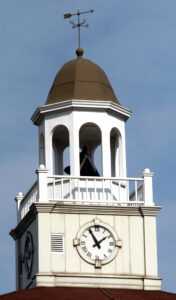‘Fall Back in Time’ Sunday morning
Leaves on the trees have turned to a mixture of colors and most have fallen from their branches. The first frost of the year has been seen on the ground, signaling the autumn season is in full swing.
With the season well underway, one aspect of the season doesn’t bring what most people enjoy, a change in daylight hours.
Central Daylight Time (CT) officially ends this coming Sunday morning at 2 a.m. local time, meaning time will ‘fall back’ one hour as Central Standard Time (CST) returns until next March.
Readers are reminded to set their clocks and watches “back” one hour prior to bedtime Saturday night (November 2) or first thing Sunday morning (November 3) to keep up with the change.
The new time will mean daylight will begin and end an hour earlier through the late fall and winter months, with a small advantage of gaining an hour of sleep Saturday night/Sunday morning.
Fortunately, CST does not last as long as Daylight Saving Time–extending for just over a four-month period.
Central Daylight Saving Time will return the second Sunday morning in March, 2025.




